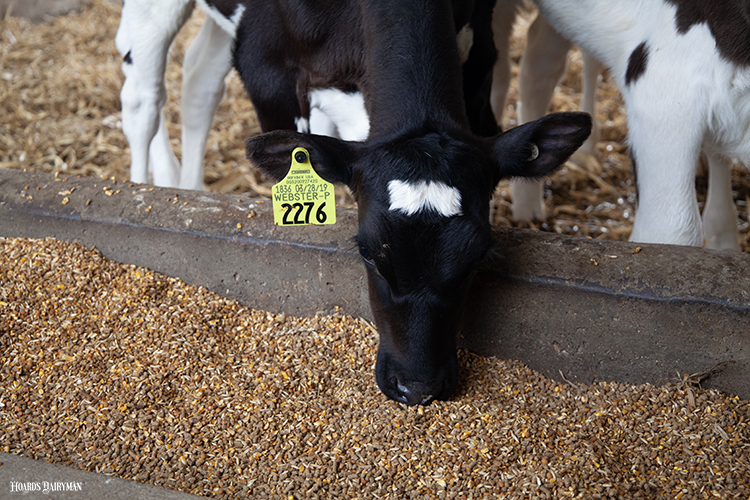
Elizabeth Russell, a Ph.D. student at University of British Columbia, has been looking into the variation of starter intake between calves and how consumption impacts long term production goals. She shared some of her early results during the Dairy Cattle Welfare Council’s annual symposium held in Fort Worth, Texas.
Russell found wide variation in how much starter calves consumed. Average daily consumption in the study was 0.67 kilograms (nearly 1.5 pounds), with a range of almost nothing to more than 2 kilograms (4.4 pounds) per day.
As one might expect, greater starter intake was correlated with calves that grew faster. “The more starter the calf eats during this period, the more average daily gain we have,” Russell noted.
In her meta-analysis of two previously published studies, she found that every 1 kilogram (2.2 pounds) of calf starter consumed between 31 and 69 days of age resulted in 1.3 kilograms (2.9 pounds) of gain during that period.
“Providing them an opportunity to eat starter provides them an opportunity to grow,” she summarized.
Following these calves into adulthood, it was determined that average daily gain during the preweaned period did not have an impact on first lactation milk yield. There was a correlation, however, between average daily gain and age at first calving. For every 1 kilogram (2.2 pounds) average daily gain increase during this period, heifers entered the milking string 42 days sooner.
Russell explained that rearing costs are reduced when heifers calve earlier, so early starter consumption would have some financial benefits to farmers in that way. She noted that this is “just the tip of the iceberg” for her research, and the data will be analyzed further to look for other trends associated with calf starter consumption.








